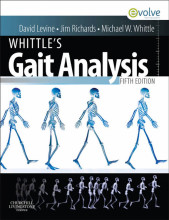Practical torture SPSS
15 important questions on Practical torture SPSS
When do you use a logistic regression?
predictor variables that are continuous and/or
categorical
What is a binary logistic regression?
The predictive varibles can be categorical or continuous.
What is a multinomial logistic regression?
- Higher grades + faster learning
- Never study anything twice
- 100% sure, 100% understanding
How do you perform a Cox proportional hazards regression analysis?
What is a logrank test and how do you do it?
Analyse – Survival –Kaplan-Meier
in compare factor choose logrank
What is a visual of checking for proportional hazards?
Kaplan meijer should not cross
Do a cox regression select the plot in plots, plot different lines for independent variable
What is another way of exploring proportional hazards?
Run regression and save partial residuals
Scatterplot-> no clear pattern
You can test whether the time and the residuals are associated by running a linear regression with time as the independent variable and the residuals as the dependent variable. The resulting regression coefficient for time should be small and non significant for not violating the assumption of proportional hazards.
How do you compare means of two datasets?
Analyze- compare means-t-test
For the paired samples t-test to be valid the differences between the paired values should be approximately normally distributed.
How do you perform an ICC test with a complete anova?
Analyze-scale-reliability analysis
Statistics- intraclass correlation coefficient with in model: two way random
Select f-test under ANOVA table
Kaplan Meier and Log rank in SPSS
How do you calculate the SEM in the icc?
How do you analyze the variance components?
Analyze- general linear model- variance components
Under “Options’ choose for ‘Restricted maximum likelihood (REML)’. REML prevents the occurrence of negative variance components.
How do you interpret the SEM?
How to calculate variance in excel?
How do you calculate standard deviation by hand in excel?
Step 1: Find the mean. =AVERAGE(A1:A5)
Step 2: For each data point, distance from the mean-> square this
Step 3: Sum the values from Step 2.
Step 4: Divide by the number of data points.->variance
Step 5: Take the square root.->std
The question on the page originate from the summary of the following study material:
- A unique study and practice tool
- Never study anything twice again
- Get the grades you hope for
- 100% sure, 100% understanding






























